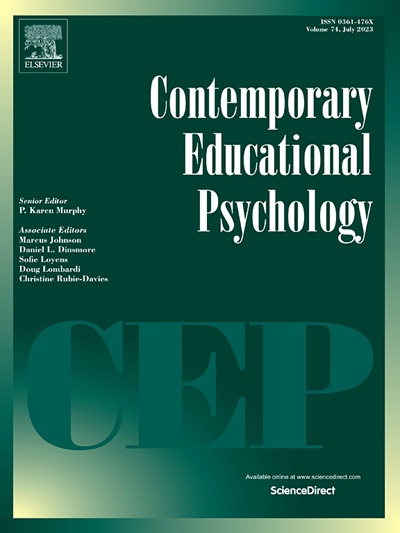Writing quality from different latent profiles of revision subprocesses in upper-primary students
IF 3.8
1区 心理学
Q1 PSYCHOLOGY, EDUCATIONAL
引用次数: 0
Abstract
Text revision is a complex process involving various subprocesses such as error detection, diagnosis and correction. These processes focus on various levels of text, from editing mechanical errors to substantial changes. The present study was designed with two main goals. First, to analyze the existence of homogeneous groups of upper-primary students according to how much they use the different revision subprocesses and their focus, assessed through a specifically created revision task. The distribution of these profiles was analyzed for individual characteristics, such as grade and gender. The second goal was to explore relations between the profiles in terms of text quality. 834 upper-primary students (age 9–13, 4th–6th grade) participated in the study. Students were asked to write a story to assess their narrative writing performance and to revise a prepared narrative text to detect, diagnose and correct six mechanical and six substantive errors. A four-profile model exhibited the best fit, classifying students as poor, mechanical, substantive and good reviewers. A gender effect was observed with more boys than girls in the poor reviewer profile, and more girls than boys in the good reviewer profile, with no effects of gender for the other two profiles. The results also indicated a clear progression in revising skills through schooling, with a higher percentage of poor reviewers in fourth-grade, mechanical reviewers in fifth-grade and good and substantive reviewers in sixth-grade. Finally, a relationship was found between text quality and student reviewer profiles, with poor reviewers writing lower quality texts and good reviewers writing higher quality texts. The identification of different revision profiles in upper-primary students has important theoretical and educational implications.
不同复习子过程潜在特征对小学生写作质量的影响
文本修订是一个复杂的过程,涉及到错误检测、诊断和纠错等各个子过程。这些过程集中在不同层次的文本上,从编辑的机械错误到实质性的修改。本研究设计有两个主要目标。首先,通过一个专门设计的复习任务,分析高年级学生同质群体的存在,根据他们使用不同复习子过程的程度和他们关注的焦点。分析了这些剖面的个人特征分布,如年级和性别。第二个目标是在文本质量方面探索概要文件之间的关系。834名小学高年级学生(9-13岁,4 - 6年级)参与了本研究。学生们被要求写一个故事来评估他们的叙事写作表现,并修改准备好的叙事文本,以发现、诊断和纠正六个机械错误和六个实质性错误。一个四侧面模型显示出最佳的契合度,将学生分为差评者、机械评者、实质性评者和优秀评者。在差的审稿人档案中观察到性别效应,男孩比女孩多,在好的审稿人档案中女孩比男孩多,而在其他两个档案中没有性别影响。结果还表明,通过学校教育,复习技能有了明显的进步,四年级的差评者比例更高,五年级的机械性评者比例更高,六年级的好评者比例更高。最后,我们发现了文本质量和学生审稿人之间的关系,差的审稿人写的文本质量较低,好的审稿人写的文本质量较高。小学高年级学生不同复习特征的识别具有重要的理论和教育意义。
本文章由计算机程序翻译,如有差异,请以英文原文为准。
求助全文
约1分钟内获得全文
求助全文
来源期刊

Contemporary Educational Psychology
PSYCHOLOGY, EDUCATIONAL-
CiteScore
16.50
自引率
3.90%
发文量
74
期刊介绍:
Contemporary Educational Psychology is a scholarly journal that publishes empirical research from various parts of the world. The research aims to substantially advance, extend, or re-envision the ongoing discourse in educational psychology research and practice. To be considered for publication, manuscripts must be well-grounded in a comprehensive theoretical and empirical framework. This framework should raise critical and timely questions that educational psychology currently faces. Additionally, the questions asked should be closely related to the chosen methodological approach, and the authors should provide actionable implications for education research and practice. The journal seeks to publish manuscripts that offer cutting-edge theoretical and methodological perspectives on critical and timely education questions.
The journal is abstracted and indexed in various databases, including Contents Pages in Education, Australian Educational Index, Current Contents, EBSCOhost, Education Index, ERA, PsycINFO, Sociology of Education Abstracts, PubMed/Medline, BIOSIS Previews, and others.
 求助内容:
求助内容: 应助结果提醒方式:
应助结果提醒方式:


